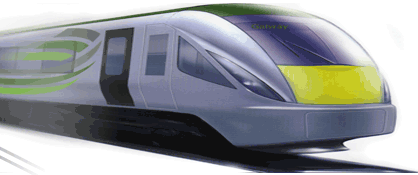|
|
West=On=Track
-News
Clearing the Burma Road in the winter of 1947
By Val Horan
© From the IRRS Journal, February 1985
The winter of 1946-47 was one of the coldest ever recorded in Ireland. At the end of February 1947 record snowfalls took place and the snow remained in many areas until May of that year. This dramatic account of the period shows how difficult life was for the railway-men of the time.
The blizzard had caused great damage to the telegraph wires and poles. Most of the sections had E.T.S. failures; there was no communication between the stations because the wires were broken. This usually meant that to establish pilot working, the pilotman had to walk the line to the far end of the section, have his forms signed, and then return. The snowplough train could not proceed until pilot working was established. The unsung heroes of these times were the Porters who established pilot working, often at the risk of their lives. I heard the late Mick Higgins of Claremorris, when speaking of those days, relate how Mr. O'Brien, then the Stationmaster at Claremorris, brought him into the house, got Mrs. O'Brien to shake Holy Water on him, and then the three of them knelt down and said a decade of the Rosary for Mick's safe return. Mick then set out to walk the line from Claremorris to Kiltimagh, a distance of 9½ miles. He made his way from gate-lodge to gate-lodge through snow drifts up to his hips in places. When he finally got to Kiltimagh he was so exhausted, the Stationmaster put him into bed to thaw him out. At daybreak he set out on the return journey. He arrived at Claremorris wet and tired, to find the snowplough train waiting for him.
Pat Keenan remembers travelling as pilotman on the snowplough engine on Thursday 27 February. Paddy Gibbons, now a driver at Westport, remembers taking over the snowplough engine on Friday. He was firing for Paddy Cullinane: they were both stationed at Claremorris at the time. The Athlone driver who had worked down the snowplough did not have road knowledge of the Burma Road. Paddy says that the train leaving Claremorris was made up of the Athlone breakdown van with its gang, a bogie carriage for the milesman, and a passenger van containing yeast and flour for Charlestown. The breakdown van had left Athlone attached to the snowplough engine to deal with a derailment at Castlerea. Mr. Martin, Assistant Loco. Supt.. Athlone, was in charge. At Claremorris, the train was joined by Mr. Follett, the Area Per. Way Engineer, with Chief Inspector Looney, both of Limerick.
Good progress was made. Paddy Cullinane was noted for always driving his engine with great elan. His method for dealing with the drifts was to hook off from the train and charge them, often to the alarm of Mr. Looney who was on the footplate. The engine was a saturated 101 Class; Paddy Gibbons can't remember her number. He says the plough on her was not very effective; it was too straight and too high. It tended to pack the snow in front of the engine, and snow would also get under the plough and pack hard between the crank and the firebox. When the engine would come to stand in a drift, the men would dig her out and Paddy Gibbons would dig away the snow from the back of the crank. They would then back up to allow the men to dig away the hard-packed snow. The engine would charge the drift again, and in this manner Charlestown was reached on Friday night.
At Charlestown it was found that there was no food to be got. The Claremorris gang included the Per. Way shop's men. These men had been taken without notice. Mr. Follett decided to send the engine and van back to Claremorris with these men to allow them to prepare themselves better. For Paddy Gibbons and his mate, it meant 24 miles tender-first in freezing conditions. The remaining men bedded down as best they could in the breakdown van and the carriage.
The engine and van returned to Charlestown early on Saturday morning. Freshly baked bread was got from a bakery in Charlestown. The worst of the snowdrifts were encountered between Charlestown and Tubbercurry. One drift, three-quarters of a mile long, took nine hours to cut a passage through. 593 with the down goods was locked in the siding in Curry with the fire thrown out; Paddy Gibbons says their engine was now running short of coal, so enough to take them to Sligo was laken off 593. Tubbercurry was reached on Sunday. On Sunday evening Leyny was reached and there they met the gang from Sligo who had cleared the road with shovels. The Athlone train continued on to Sligo. On Monday they cleared the second road between Sligo and Ballysodare before proceeding to Athlone.
Working a steam engine in falling snow is a miserable experience. The suction caused by the forward movement of the engine makes the swirling snowflakes penetrate everywhere. They got down your neck and into your eyes, and made it very difficult to see where you were going. After 1947 I never wanted to see snow again. |
|
